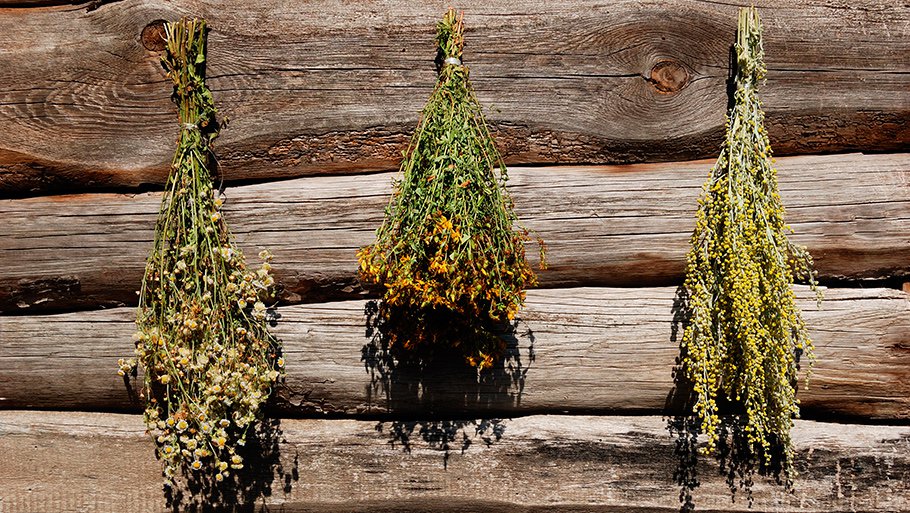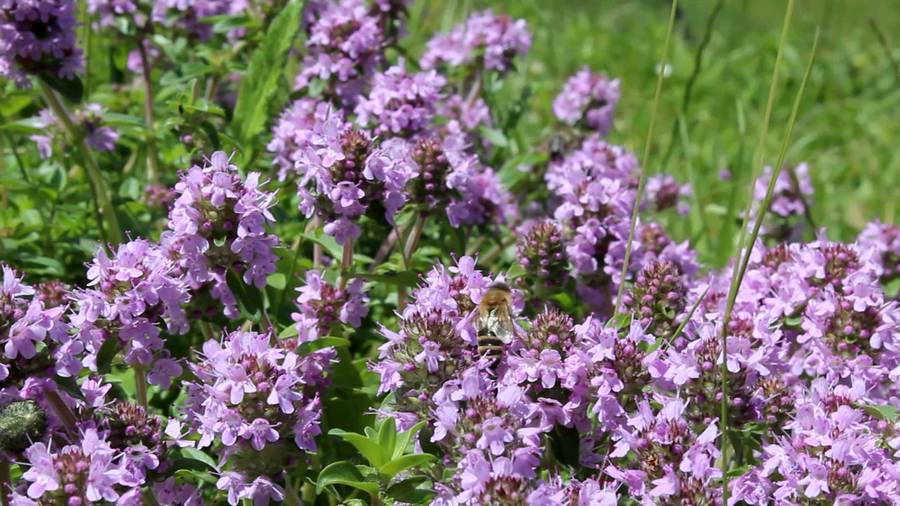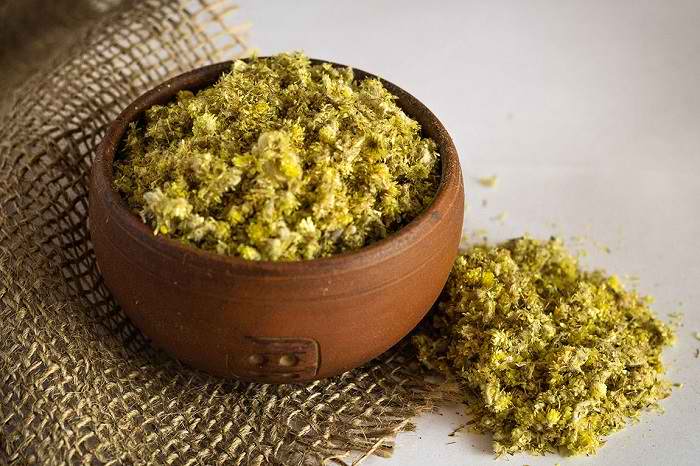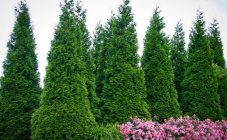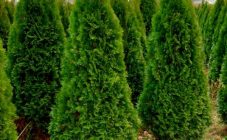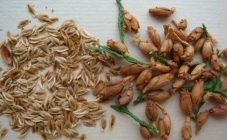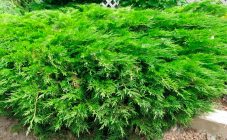Content:
- How to dry herbs at home
- Dried rosemary: ways to prepare spicy herbs - how to dry rosemary at home
- Dried cilantro (coriander) for the winter: how and when to dry greens and cilantro seeds at home
- Dried tarragon (tarragon) - harvesting at home
- Dried oregano at home - how to make oregano seasoning
- Dried nettles: methods of harvesting for the winter - how to dry nettles at home.
- DIY herbal dryer
- Industrial and domestic herbal drying equipment
Drying medicinal or spicy herbs is a simple process, but it requires compliance with certain conditions. The first thing to do is to sort out the raw materials from garbage the day before, sort. Remove extraneous leaves, insects and dead grass. Drying of the collected herbs should be started as soon as possible, as they can start to heat, rot and mold. As a result, beneficial enzymes are destroyed.
How to dry herbs at home
Do I need to wash the grass before drying? The herbs collected from the forest do not need to be washed, as they can quickly start to deteriorate. In addition, pollen is washed off the flowers in this way. However, some herbs from the garden should be rinsed before drying, as they may contain soil. The collected raw materials are laid out as thinly as possible on prepared fabric or parchment. The herbs are dried in the shade in a well ventilated area.
Some plant parts can be dried in the shade or in the sun. This applies to fruits, seeds and roots.
In order not to spoil the raw materials, you need to know how to properly dry medicinal herbs.
Dried rosemary: ways to prepare spicy herbs - how to dry rosemary at home
Rosemary is used both as a seasoning and medicinally. Useful aromatic tinctures are made from it, brewed instead of tea. This widespread use is due to its high content of essential oils. Therefore, it should be dried very carefully so that it does not lose its beneficial properties and refined taste. Collect it before flowering.
There are several ways to dry:
- The best way to dry is by air under a canopy or in a well-ventilated area.
- The next method is when it is dried in a fruit and vegetable dryer. The grass is cut into small pieces of 5-6 cm and put on the shelves of the dryer. The temperature should not exceed 40 ˚С. In this case, drying proceeds much faster, within a day.
- A more undesirable option is drying in the oven, since it is very difficult to create the desired temperature so that overheating does not occur. To do this, leave the oven door ajar and set the lowest heating mode. In this embodiment, drying is even faster than in the above.
It is better to store it after drying in an airtight container so that essential oils do not evaporate.
Dried cilantro (coriander) for the winter: how and when to dry greens and cilantro seeds at home
It is better to cut the grass for harvesting before the seeds appear.Before the drying begins, it is sorted out, removing all extraneous things. Then they wash, sort out larger parts, which are then crushed. Leaves do not need to be crushed as they become small after drying.
You can also dry it in several ways:
- The best option is to air dry in the shade.
- It can be dried in the sun, this will not greatly affect the quality, but the color will change.
- It can be dried in an electric dryer or oven, but there is a risk of overdrying, which will affect the quality and taste.
Coriander - cilantro seeds are dried as follows. Hang bunches of grass with seeds to dry. After the grass has dried, the seeds are shaken off from it into a wide bowl. Then the seeds are shelled and winnowed in a weak wind.
You can store cilantro in fabric bags or in resealable containers. It is best to store coriander (seeds) in resealable containers, otherwise it will lose its flavor when the essential oils evaporate.
Dried tarragon (tarragon) - harvesting at home
It is harvested in summer and autumn. Important! Tarragon contains very volatile essential oils, so it is very demanding in terms of preparation and storage. Otherwise, with the wrong approach, it loses its taste and aroma.
It is dried as follows.
The twigs are washed, then laid out on a clean, dry surface in the shade. The degree of drying is determined by the fragility of the branches. If they break when bent, then dry enough. Then the leaves are cut off from the branches and immediately poured into jars. Otherwise, in an open space, the herbal aroma will quickly disappear.
You can also dry it in a dryer, but the temperature should not exceed 35˚С. But the first way is preferable.
Dried oregano at home - how to make oregano seasoning
Oregano is harvested when the flowers are fully blooming on it, in late July or early August.
Oregano should not be washed before drying, it is assumed that it was collected in a clean place.
You can also dry in several ways, as indicated above:
- outdoors in the shade;
- in the dryer;
- in the oven.
First, the branches are completely dried. The leaves are then removed from the stems and collected in resealable jars or containers to prevent the seasoning from losing its herbaceous flavor.
Dried nettles: methods of harvesting for the winter - how to dry nettles at home.
Nettles are harvested from June to August during the flowering periods. It does not need to be washed, and it must be collected in a clean place free from dust and chemical contamination. First, it is sorted out, removing everything extraneous, then dried along with the stems. Next, the leaves are separated.
It is dried in the same way as the herbs described above:
- outdoors in the shade;
- in the dryer;
- in the oven.
It can be stored in bags or in resealable containers, which is more preferable. You can store it in the form of leaves, or you can grind the leaves into powder.
DIY herbal dryer
Making a dryer with your own hands is a simple task. A simple structure is made, consisting of a base and mesh shelves fixed to it. Herbs are placed on these shelves. This saves space in the room or under a shed and provides good ventilation for drying.
Or you can make a dryer with heating and forced ventilation. They make the case - a semblance of a large box. Mesh shelves are fixed inside. A fan and a heating element are installed below. The heating element works either permanently or is controlled by a timer or temperature sensor, which turns off and on the heating. It is a prerequisite for the upper part of the structure to be mesh, so that the forced air leaves the dryer. The lower part should also freely allow air flow.
Industrial and domestic herbal drying equipment
There are several types of industrial equipment:
- Electrical elements are used for heating - heating elements or infrared electrical elements.
- There are dryers that run on gas or wood, in which the air is heated by burning fuel. In this case, the combustible air with smoke does not enter the drying chamber, but heats the walls of the chamber.
- Microwave technologies are also used to create heating of dried products.
Household appliances are usually more compact and simpler. Basically, these are dehydrators. They are a housing with mesh shelves, a fan and a heating element installed in it. They can be both round and square. Differ in power. Ventilation can be horizontal or vertical.
When the herbs are completely dry, the stems become brittle. To check, you need to bend a few stems. If they break, then the grass is dry, but if they bend, then most likely the grass is not completely dried. Flowers and leaves of dry grass are easily ground into powder.
